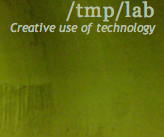Difference between revisions of "Music : Audio Analysis, Synchronization, And More"
From Tmplab
(Created page with " == Audio Analysis Libraries and Projects == === Aubio === aubio is a tool designed for the extraction of annotations from audio signals. Its features include segmenting a...") |
|||
| Line 1: | Line 1: | ||
== Audio Analysis Libraries and Projects == | == Audio Analysis Libraries and Projects == | ||
| + | |||
| + | === PyAudio === | ||
| + | |||
| + | PyAudio provides Python bindings for PortAudio, the cross-platform audio I/O library. With PyAudio, you can easily use Python to play and record audio on a variety of platforms, such as GNU/Linux, Microsoft Windows, and Apple Mac OS X / macOS. | ||
| + | |||
| + | '''Features''' | ||
| + | * Read and play audio | ||
| + | |||
| + | https://people.csail.mit.edu/hubert/pyaudio/ | ||
=== Aubio === | === Aubio === | ||
| − | aubio is a tool designed for the extraction of annotations from audio signals | + | aubio is a tool designed for the extraction of annotations from audio signals. |
| − | + | '''Features''' | |
| + | * segmenting a sound file before each of its attacks, | ||
| + | * performing pitch detection, | ||
| + | * tapping the beat | ||
| + | * producing midi streams from live audio. | ||
| − | === | + | Project Homepage https://aubio.org/ |
| + | |||
| + | Github https://github.com/aubio/aubio | ||
| + | |||
| + | |||
| + | === pyAudioAnalysis === | ||
A Python library for audio feature extraction, classification, segmentation and applications | A Python library for audio feature extraction, classification, segmentation and applications | ||
| − | https://github.com/tyiannak/pyAudioAnalysis | + | Gihtub https://github.com/tyiannak/pyAudioAnalysis |
| + | |||
| + | ""Features"" | ||
| + | * Extract audio features and representations (e.g. mfccs, spectrogram, chromagram) | ||
| + | * Classify unknown sounds | ||
| + | * Train, parameter tune and evaluate classifiers of audio segments | ||
| + | * Detect audio events and exclude silence periods from long recordings | ||
| + | * Perform supervised segmentation (joint segmentation - classification) | ||
| + | * Perform unsupervised segmentation (e.g. speaker diarization) | ||
| + | * Extract audio thumbnails | ||
| + | * Train and use audio regression models (example application: emotion recognition) | ||
| + | * Apply dimensionality reduction to visualize audio data and content similarities | ||
| + | |||
| + | |||
| + | https://github.com/stevetjoa/musicinformationretrieval.com | ||
Revision as of 20:07, 8 June 2019
Audio Analysis Libraries and Projects
PyAudio
PyAudio provides Python bindings for PortAudio, the cross-platform audio I/O library. With PyAudio, you can easily use Python to play and record audio on a variety of platforms, such as GNU/Linux, Microsoft Windows, and Apple Mac OS X / macOS.
Features
- Read and play audio
https://people.csail.mit.edu/hubert/pyaudio/
Aubio
aubio is a tool designed for the extraction of annotations from audio signals.
Features
- segmenting a sound file before each of its attacks,
- performing pitch detection,
- tapping the beat
- producing midi streams from live audio.
Project Homepage https://aubio.org/
Github https://github.com/aubio/aubio
pyAudioAnalysis
A Python library for audio feature extraction, classification, segmentation and applications
Gihtub https://github.com/tyiannak/pyAudioAnalysis
""Features""
- Extract audio features and representations (e.g. mfccs, spectrogram, chromagram)
- Classify unknown sounds
- Train, parameter tune and evaluate classifiers of audio segments
- Detect audio events and exclude silence periods from long recordings
- Perform supervised segmentation (joint segmentation - classification)
- Perform unsupervised segmentation (e.g. speaker diarization)
- Extract audio thumbnails
- Train and use audio regression models (example application: emotion recognition)
- Apply dimensionality reduction to visualize audio data and content similarities
